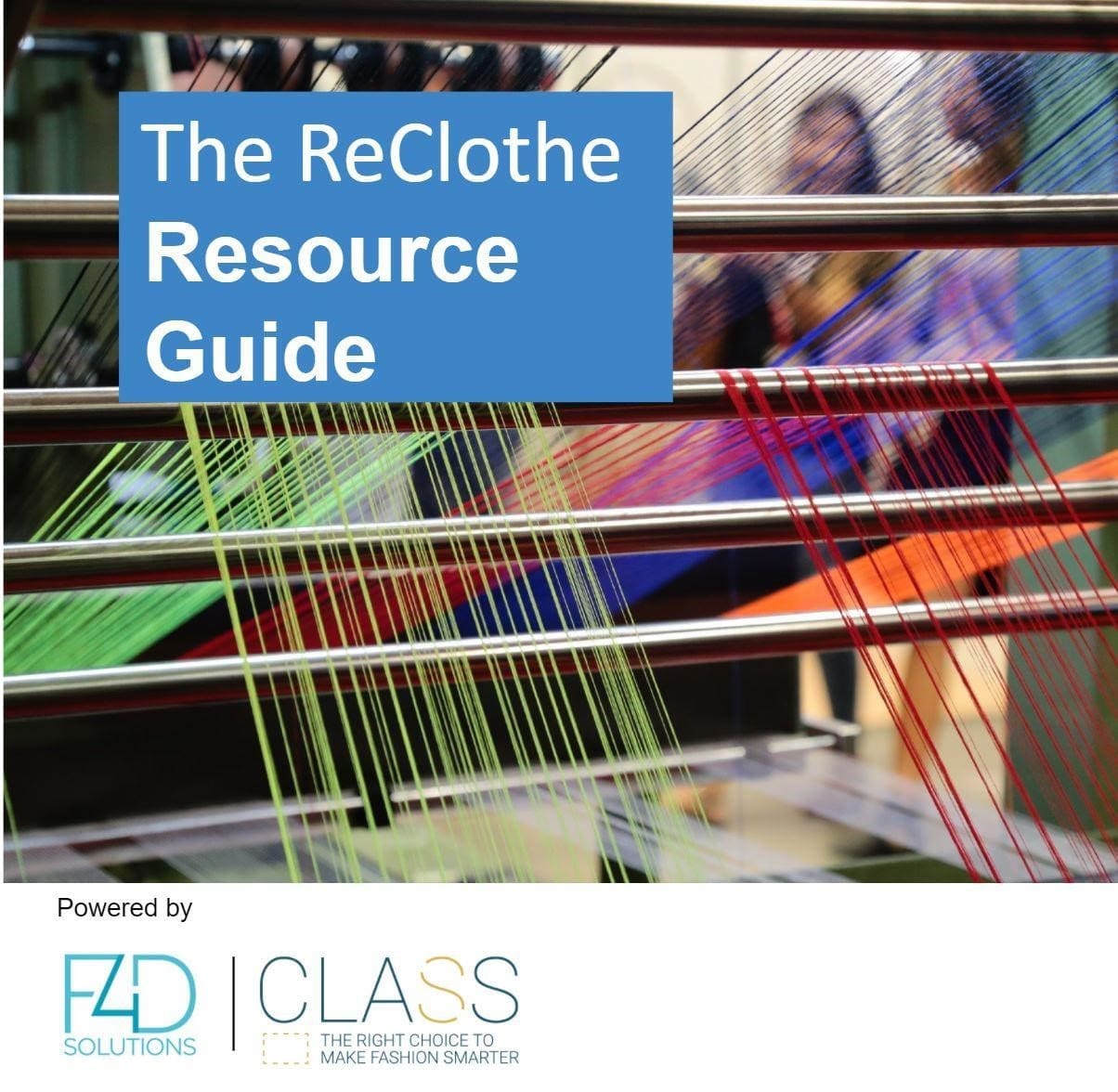Fashion 4 Development & C.L.A.S.S. Eco Hub will launch The Reclothe Resource Guide during the virtual exhibit: Discover the SDGs – To Make Peace With Nature, a virtual hub convened by the United Nations Office for Partnerships April 1 – 30, 2021.
The publication’s mission is to inform and educate fashion industry professionals, schools, universities, students, and new generation brands to focus on the next generation of the circular economy and make an impact on the value chain. The ReClothe guide lists all solutions, technologies, fabric suppliers, dyers, and finishers currently available and scalable globally that can really answer the new generation needs of the contemporary consumer. ReClothe will be published quarterly and focus on innovators working the best practices and opportunities in development & manufacturing for a responsible fashion industry.
“We invited some of the most progressive and forward-thinking companies in the market to share their unique stories of responsible innovation.” – Jeanine Ballone, managing director of F4D Solutions.
“This partnership will help promote & communicate the platforms and supply chain technologies available today for existing brands and emerging young designers to utilize now.“-Giusy Bettoni, founder of C.L.A.S.S. Eco Hub.
On today’s date, the guide includes Bacx™ by Centro Seta, Bext360, DYNTEX® Biosynthetics, Eastman Naia™, ECOSENSOR™ by Asahi Kasei, ECOTEC® by Marchi & Fildi, Iluna Group, Lanificio Zignone, Maeba International, Mending for Good, Modern Meadow, Re.VerSo™, ROICA™ by Asahi Kasei, Santoni, Smartex, Spiber Inc., SUPREME GREEN COTTON® by Varvaressos, TINTEX Textiles, VEGEA and YKK.
Registration is now open: https://www.

